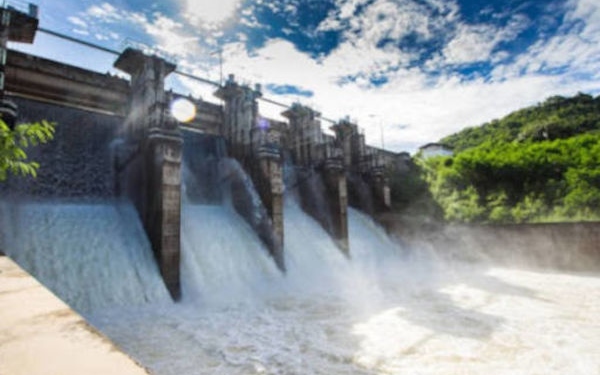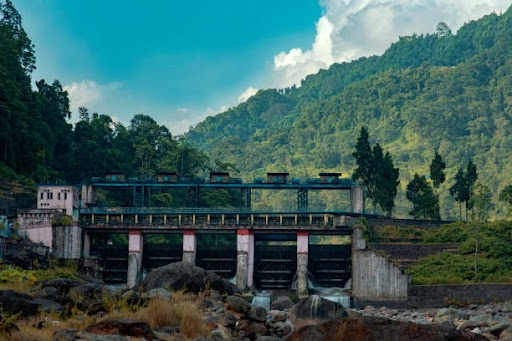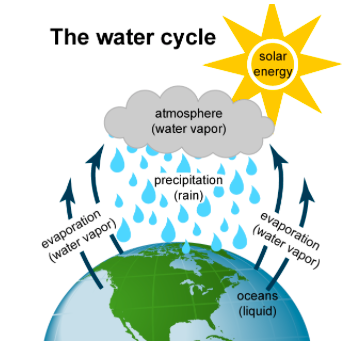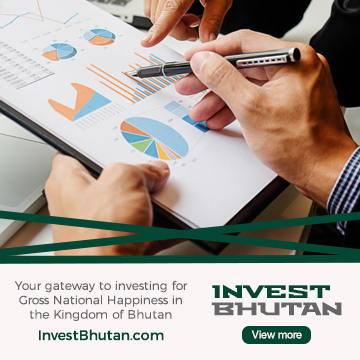The enormous role of hydropower in Bhutan
Bhutan uses hydropower to conserve the environment, produce electricity, and achieve economic self-reliance.

Bhutan is a tireless advocate against climate change. Pristine forest sprawls across the tiny Himalayan nation, compliant with their constitution that dictates “a minimum of 60% of Bhutan’s total land shall be maintained under forest cover at all times”.
Every year, the country generates 2.2 million tons of carbon dioxide. When carbon dioxide is trapped within the atmosphere, it becomes a greenhouse gas, leading to climate change.
Fortunately, Bhutan’s large number of trees—thanks to the pristine forest covers—absorbs over three times that amount of carbon dioxide. Thus, the country produces a negative four million tons of carbon dioxide yearly, rendering them carbon negative.
To maintain its carbon negative status, Bhutan has to be mindful of the greenhouse gases it produces, hence the kingdom turned to its major asset — its raging rivers.
Enter: hydropower.

Unfortunately, Bhutan’s geography places them landlocked between China and India on mountainous land, which is not great in terms of economic advantage. Fortunately, the mountainous lands mean varying altitudes. Pair that with an annual rainfall that ranges between 500mm in the north and 5,000mm in the south, and Bhutan has themselves the solution to their environmental and economic hitch.
Now, hydropower is the backbone of the Bhutanese economy.
Bhutan has the potential to harness approximately 30,000 MW of power annually, of which 23,760 MW is economically feasible. Thus far, sites for the 23,760 MW of hydropower have been identified and assessed to be technically feasible.
Hydropower 101
Firstly, what is hydropower?
Answer: Hydropower is the usage of the force from flowing water to produce mechanical energy.
To understand hydropower, one has to understand the water cycle, which consists of three steps:
- Solar energy heats the water in rivers, lakes, and oceans, causing the water to evaporate as water vapour.
- The water vapour condenses into clouds and falls as precipitation (rain and snow).
- Precipitation collects in streams, rivers, oceans, and lakes. Soon the whole process is repeated.

Source: EIA
The amount of precipitation (that drains into the rivers and streams) of a particular area determines the available resources for producing hydropower. Factors such as seasonal and long-term changes in precipitation affect hydropower production too.
Since hydropower uses water, hydropower plants are naturally located on or near a body of water. As the water flows along a change in elevation, the velocity of the flow increases; this is referred to as a head. The volume of water flowing through a head dictates the amount of available energy. The higher the head, the faster the water flows, the greater the amount of electricity produced.
After the head, the water flows through a pipe, known as a penstock. The water turns the blades in the turbine to charge the generator and create electricity.

Source: EIA
Hydropower in Bhutan
Electricity was first introduced to Bhutan in 1966 when a diesel-generating plant was established in Phuentsholing, a border town in the Southwest. Then in 1967, Bhutan built their first hydroelectric plant of 360 kW to supply power to Thimphu, the capital.
By 1974, mini hydropower plants of 300 kW to 1,250 kW were set up in five districts to provide electricity, primarily for lighting.
In 1974, Bhutan and India signed an agreement for the construction of the 336 MW Chukha hydro project across the river Wangchu in western Bhutan. The project aimed to meet the power demand of the area. Surplus electricity was exported to India.
More and more hydropower plants were commissioned over the years as Bhutan moved steadily towards its goal to provide electricity for all by the year 2020. Bhutan achieved success by providing 100% electricity access in 2016.
A list of some of Bhutan’s plants are as follows:
- Punatsangchhu-1 (1000 MW, 4770 GWh)
- Amochhu-2 (500 MW, 2210 GWh)
- Zhamgang (Digala) Project (670 MW, 3207 GWh)
- Punatsangchhu-2 (990 MW, 4667 GWh)
- Kholongchhu (Gomkora) (485 MW, 2209 GWh)
- Kheng (Shingkhar) project (570 MW, 2713 GWh)
- Mangdechhu (670 MW, 2909 GWh)
- Khomachhu (326 MW, 1507 GWh)
- Nikachhu/Tangsebji (210 MW, 1042 GWh)
- Kurichhu (Rothpashong) (401 MW, 1883 GWh)
- Bunakha Reservoir scheme (180 MW, 893 GWh)
The socio-economic role of hydropower in Bhutan
Hydropower plays two important roles in the socio-economic development of Bhutan:
- To provide safe, reliable, sufficient, and affordable electricity for domestic consumption and industrial use.
- As an industry to earn revenue from the exportation of hydroelectricity, which contributes to the capital necessary to achieve economic self-reliance (80% of Bhutan’s surplus power is channelled over to India)
During the 2000s, 27% of Bhutan’s revenue and 14% of their GDP was owed to the hydropower sector. Nonetheless, since the early 2010s, the taxes and dividends of the country have been primarily from hydropower companies and constitute more than 40% of national revenue.
Thus the hydropower sector has become synonymous with Bhutan’s economy.





